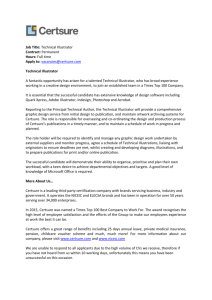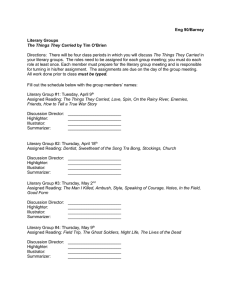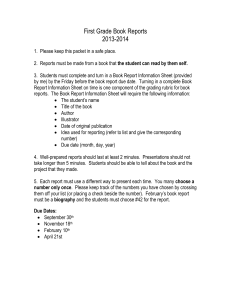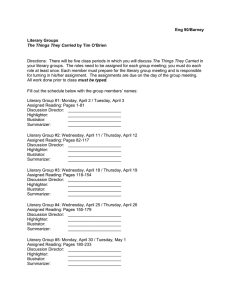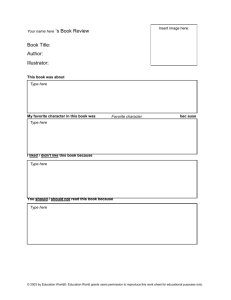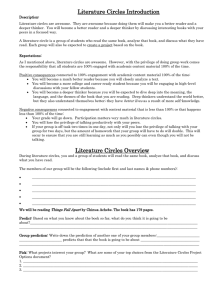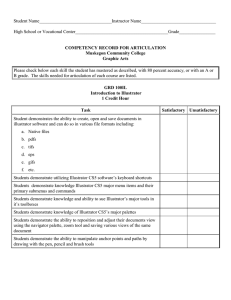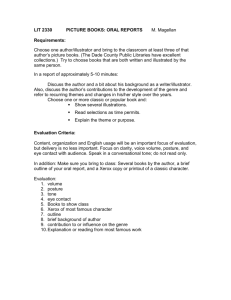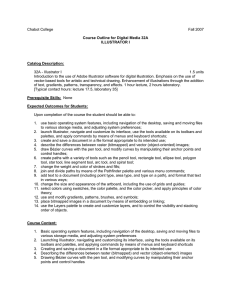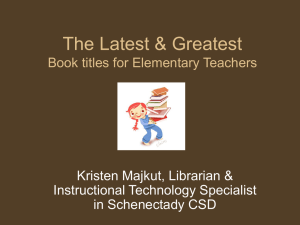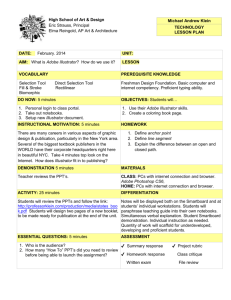Lit Circle PPT
advertisement
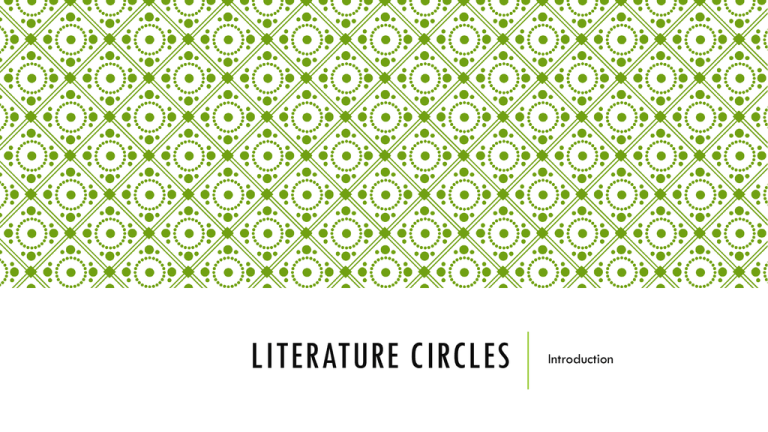
LITERATURE CIRCLES Introduction STUDENT ROLES Discussion Director Literary Luminary Illustrator Word Wizard Connector Summarizer DISCUSSION DIRECTOR Your role demands that you identify important aspects of the text and develop questions your group will discuss. Focus on the major themes or “big ideas” in the text and your reaction to those ideas. What interests you will most likely interest the group. You are also responsible for facilitating your group’s discussion. LITERARY LUMINARY Select text that is thought-provoking, humorous, controversial, poetic, confusing, unusual, important, interesting. You find passages your group should discuss in depth. These passages should be memorable, interesting, puzzling, funny or important. Your notes should include the quotations but also why you chose them, and what you have to say about them. You can either read the passage aloud or ask members of your group to read the roles. ILLUSTRATOR Create illustration or graphic organizer related to the text. Illustrator shows picture and allows group to guess the connection to the story and to elicit discussion. Only after group is finished does Illustrator explain the importance of the picture and its connection to the story. Your role is to draw what you read. This might mean drawing a scene as a cartoonlike sequence or an important scene so readers can better understand the action. You can draw maps or organizational trees to show how one person, place, or event relates to the others. Use the notes to explain how your drawing relates to the text. Label your drawings so we know who the characters are. Make your drawing on a separate sheet of paper. WORD WIZARD Select unfamiliar, challenging, enriching, unusual, or interesting words. Look up the definitions and make sure word meanings can be expressed in your own words. While reading the assigned section, watch out for words worth knowing. These words might be interesting, new, important, or used in unusual ways. This also includes slang or dialect. It is important to indicate the specific location of the words so the group can discuss them in context. CONNECTOR Your job is to connect what you read with what you study in this or other classes. You can also connect the story with events in your own life or the world outside school as depicted in the news or other media. Another valuable source of connection is books you’ve already read this year. Connections should be meaningful to you and those in your group. Make connections between the text (characters, setting, conflicts, etc.) and … Happenings at school Life outside school Similar events of another time or place. Other people or problems Another book Events in the news SUMMARIZER Prepare a brief summary of the day’s reading. Use the questions to the right to help you decide what to include. In some cases, you might ask yourself what details, characters, or events are so important that they would be included on a test. If it helps you to organize the information, consider making a numbered list or timeline.

